About Oracle Database Performance Method
bottleneck(瓶颈): a point where resource contention is highest
throughput(吞吐量): the amount of work that can be completed in a specified time.
response time (响应时间): the time to complete a specified workload
2.1 Gathering Database Statistics Using the Automatic Workload Repository(AWR)
Automatic Workload Repository (AWR) automates database statistics gathering by collecting, processing, and maintaining performance statistics for database problem detection and self-tuning purposes.
the database gathers statistics every hour and creates an AWR snapshot, which is a set of data for a specific time that is used for performance comparisons.
The following initialization parameters are relevant for AWR:
- STATISTICS_LEVEL
- CONTROL_MANAGEMENT_PACK_ACCESS
The database statistics collected and processed by AWR include:
2.1.1 Time Model Statistics
Time model statistics measure the time spent in the database by operation type. The most important time model statistic is database time (DB time). DB time represents the total time spent in database calls by foreground sessions, and is an indicator of the total instance workload.

A session is a logical entity in the database instance memory that represents the state of a current user login to a database.Database time is calculated by aggregating the CPU time and wait time of all active sessions (sessions that are not idle).

The objective of database tuning is to reduce DB time. In this way, you can improve the overall response time of user transactions in the application.
2.1.2 Wait Event Statistics
Wait events are incremented by a session to indicate that the session had to wait for an event to complete before being able to continue processing. When a session has to wait while processing a user request, the database records the wait by using one of a set of predefined wait events. The events are then grouped into wait classes, such as User I/O and Network. Wait event data reveals symptoms of problems that might be affecting performance, such as latch, buffer, or I/O contention.
2.1.3 Session and System Statistics
A large number of cumulative database statistics are available on a system and session level. Some of these statistics are collected by AWR.
2.1.4 Active Session History Statistics
The Active Session History (ASH) statistics are samples of session activity in the database. The database samples active sessions every second and stores them in a circular buffer in the System Global Area (SGA).

2.1.5 High-Load SQL Statistics
SQL statements that are consuming the most resources produce the highest load on the system, based on criteria such as elapsed time and CPU time.
2.2 Using the Oracle Performance Method
Performance tuning using the Oracle performance method is driven by identifying and eliminating bottlenecks in the database, and by developing efficient SQL statements. Database tuning is performed in two phases: proactively and reactively.
In the proactive tuning phase, you must perform tuning tasks as part of your daily database maintenance routine, such as reviewing ADDM analysis and findings, monitoring the real-time performance of the database, and responding to alerts.
In the reactive tuning phase, you must respond to issues reported by users, such as performance problems that may occur for only a short duration of time, or performance degradation to the database over a period of time.
SQL tuning is an iterative process to identify, tune, and improve the efficiency of high-load SQL statements.
To improve database performance, you must apply these principles iteratively.
2.2.1 Preparing the Database for Tuning
To prepare the database for tuning:
- Get feedback from users.
Determine the scope of the performance project and subsequent performance goals, and determine performance goals for the future. This process is key for future capacity planning.
2. Check the operating systems of all systems involved with user performance.
Check for hardware or operating system resources that are fully utilized. List any overused resources for possible later analysis. In addition, ensure that all hardware is functioning properly.
3.Ensure that the STATISTICS_LEVEL initialization parameter is set to TYPICAL (default) or ALL to enable the automatic performance tuning features of Oracle Database, including AWR and ADDM.
4.Ensure that the CONTROL_MANAGEMENT_PACK_ACCESS initialization parameter is set to DIAGNOSTIC+TUNING (default) or DIAGNOSTIC to enable ADDM.
2.2.2 Tuning the Database Proactively
To tune the database proactively:
- Review the ADDM findings
- Implement the ADDM recommendations
- Monitor performance problems with the database in real time
- Respond to performance-related alerts
-
Validate that any changes have produced the desired effect, and verify that the users experience performance improvements.
2.2.3 Tuning the Database Reactively
This section lists and describes the steps required to tune the database based on user feedback. This tuning procedure is considered reactive. Perform this procedure periodically when performance problems are reported by the users.
To tune the database reactively:
- Run ADDM manually to diagnose current and historical database performance when performance problems are reported by the users
- Resolve transient performance problems.(ASH reports enable you to analyze trainsient performance problems with the database that are short-lived and do not appear in the ADDM analysis)
- Resolve performance degradation over time
-
Validate that the changes made have produced the desired effect, and verify that the users experience performance improvements.
-
Repeat these steps until your performance goals are met or become impossible to achieve due to other constraints.
2.2.4 Tuning SQL Statements
This section lists and describes the steps required to identify, tune, and optimize high-load SQL statements.
To tune SQL statements:
- Identify high-load SQL statements
- Tune high-load SQL statements
- Optimize data access paths(creating the proper set of materialized views, materialized view logs, and indexes for a given workload by using SQL Access Advisor)
- Analyze the SQL performance impact of SQL tuning and other system changes by using SQL Performance Analyzer.
-
Repeat these steps until all high-load SQL statements are tuned for greatest efficiency.
2.3 Common Performance Problems Found in Databases
consult the appropriate section that addresses these problems:
- CPU bottlenecks
Performance problems caused by CPU bottlenecks are diagnosed by ADDM,you can also identify CPU bottlenecks by using the Performance page in Cloud Control
- Undersized memory structures
Are the Oracle memory structures such as the System Global Area (SGA), Program Global Area (PGA), and buffer cache adequately sized? Performance problems caused by undersized memory structures are diagnosed by ADDM.You can also identify memory usage issues by using the Performance page in Cloud Control
- I/O capacity issues
Is the I/O subsystem performing as expected? Performance problems caused by I/O capacity issues are diagnosed by ADDM.You can also identify disk I/O issues by using the Performance page in Cloud Control
- Suboptimal use of Oracle Database by the application
Problems such as establishing new database connections repeatedly, excessive SQL parsing, and high levels of contention for a small amount of data (also known as application-level block contention) can degrade the application performance significantly. Performance problems caused by suboptimal use of Oracle Database by the application are diagnosed by ADDM.You can also monitor top activity in various dimensions—including SQL, session, services, modules, and actions—by using the Performance page in Cloud Control.
- Concurrency issues
A high degree of concurrent activities might result in contention for shared resources that can manifest in the form of locks or waits for buffer cache. Performance problems caused by concurrency issues are diagnosed by ADDM.You can also identify concurrency issues by using Top Sessions in Cloud Control
- Database configuration issues
For example, is there evidence of incorrect sizing of log files, archiving issues, too many checkpoints, or suboptimal parameter settings? Performance problems caused by database configuration issues are diagnosed by ADDM.
- Short-lived performance problems
Depending on the interval between snapshots taken by AWR, performance problems that have a short duration may not be captured by ADDM. You can identify short-lived performance problems by using the Active Session History report.
- Degradation of database performance over time
You can generate an AWR Compare Periods report to compare the period when the performance was poor to a period when the performance is stable to identify configuration settings, workload profile, and statistics that are different between these two time periods. This technique helps you identify the cause of the performance degradation
- Inefficient or high-load SQL statements
Performance problems caused by high-load SQL statements are diagnosed by ADDM.You can also identify high-load SQL statements by using Top SQL in Cloud Control.You can tune the high-load SQL statements using SQL Tuning Advisor
- Object contention
Are any database objects the source of bottlenecks because they are continuously accessed?Performance problems caused by object contention are diagnosed by ADDM.You can also optimize the data access path to these objects using SQL Access Advisor.
- Unexpected performance regression after tuning SQL statements
Tuning SQL statements may cause changes to their execution plans, resulting in a significant impact on SQL performance. In some cases, the changes may result in the improvement of SQL performance. In other cases, the changes may cause SQL statements to regress, resulting in a degradation of SQL performance.
Before making changes on a production system, you can analyze the impact of SQL tuning on a test system by using SQL Performance Analyzer. This feature enables you to forecast the impact of system changes on a SQL workload by:
-
Measuring the performance before and after the change
-
Generating a report that describes the change in performance
-
Identifying the SQL statements that regressed or improved
-
Providing tuning recommendations for each SQL statement that regressed
-
Enabling you to implement the tuning recommendations when appropriate
相关文章:

About Oracle Database Performance Method
bottleneck(瓶颈): a point where resource contention is highest throughput(吞吐量): the amount of work that can be completed in a specified time. response time (响应时间): the time to complete a spec…...
)
JavaScript 日期和时间的格式化大汇总(收集)
一、日期和时间的格式化 1、原生方法 1.1、使用 toLocaleString 方法 Date 对象有一个 toLocaleString 方法,该方法可以根据本地时间和地区设置格式化日期时间。例如: const date new Date(); console.log(date.toLocaleString(en-US, { timeZone: …...

【Python】缺失值可视化工具库:missingno
文章目录一、前言二、下载二、使用介绍2.1 绘制缺失值条形图2.2 绘制缺失值热力图2.3 缺失值树状图三、参考资料一、前言 在我们进行机器学习或者深度学习的时候,我们经常会遇到需要处理数据集缺失值的情况,那么如何可视化数据集的缺失情况呢࿱…...

【代码随想录二刷】Day18-二叉树-C++
代码随想录二刷Day18 今日任务 513.找树左下角的值 112.路径总和 113.路径总和ii 106.从中序与后序遍历序列构造二叉树 105.从前序与中序遍历序列构造二叉树 语言:C 513.找树左下角的值 链接:https://leetcode.cn/problems/find-bottom-left-tree-va…...

制造业的云ERP在外网怎么访问?内网服务器一步映射到公网
随着企业信息化、智能化时代的到来,很多制造业企业都在用云ERP。用友U 9cloud通过双版本公有云专属、私有云订阅、传统软件购买三种模式满足众多制造业企业的需求,成为一款适配中型及中大型制造业的云ERP,是企业数智制造的创新平台。 用友U 9…...

zookeeper 复习 ---- 练习
zookeeper 复习 ---- 练习在同一节点配置三个 zookeeper,配置正确的是? A: zoo1.cfg tickTime2000 initLimit5 syncLimit2 dataDir/var/lib/zookeeper/zoo1 clientPort2181 server.1localhost:2666:3666 server.2localhost:2667:3667 serv…...

2023年全国最新道路运输从业人员精选真题及答案1
百分百题库提供道路运输安全员考试试题、道路运输从业人员考试预测题、道路安全员考试真题、道路运输从业人员证考试题库等,提供在线做题刷题,在线模拟考试,助你考试轻松过关。 11.在以下选项中关于安全生产管理方针描述正确的是(…...
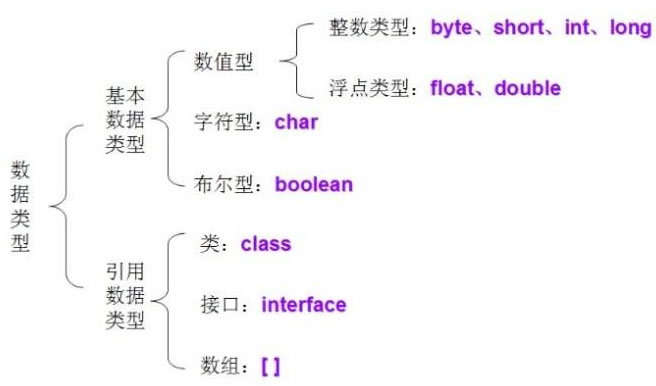
Java每日一练——Java简介与基础练习
系列文章目录 提示:这里可以添加系列文章的所有文章的目录,目录需要自己手动添加 例如:第一章 Python 机器学习入门之pandas的使用 文章目录 目录 系列文章目录 文章目录 前言 一、简述解释型语言与编译型语言 二、Java语言的执行流程 2.1、…...

解决Edge浏览器主页被篡改问题,或许可以帮你彻底解决
问题描述: 之前从一个第三方网站下载了一个不知名软件,接着电脑就各种下载360全家桶之类的软件,后来问题解决了,但是还残留了一些问题,前几天发现edge浏览器的主页被改成了360导航,就是那个该死的hao123&a…...
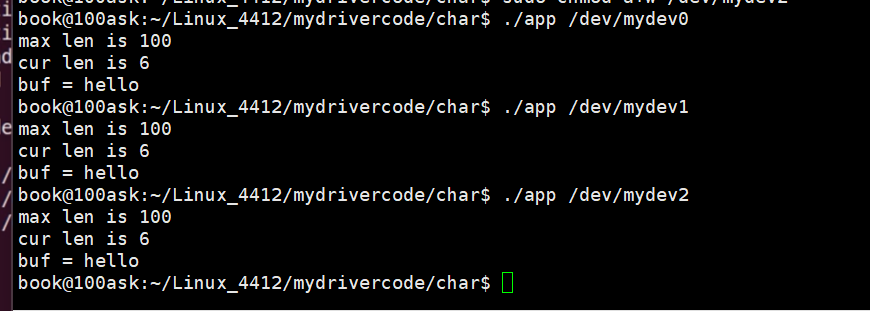
字符设备驱动基础(一)
目录 一、Linux内核对设备的分类 linux的文件种类: Linux内核按驱动程序实现模型框架的不同,将设备分为三类: 总体框架图: 二、设备号------内核中同类设备的区分 三、申请和注销设备号 四、函数指针复习 4.1、 内存四区 …...

将 Supabase 作为下一个后端服务
对于想快速实现一个产品而言,如果使用传统开发,又要兼顾前端开发,同时又要花费时间构建后端服务。然而有这么一个平台(Baas Backend as a service)后端即服务,能够让开发人员可以专注于前端开发,…...

14:高级篇 - CTK 服务工厂 简述
作者: 一去、二三里 个人微信号: iwaleon 微信公众号: 高效程序员 一般情况下,服务对象在被注册之后,任何其它的 Plugin 在请求该服务时,CTK Plugin Framework 都返回的是同一个对象。倘若要为每一个 Plugin 消费者返回不同的服务对象,或者在真正需要该服务对象时才创建…...
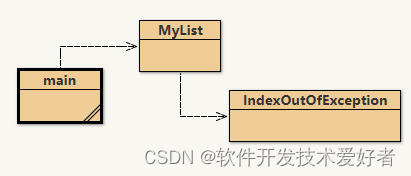
Java中的链表实现介绍
Java中的链表实现介绍 学习数据结构的的链表和树时,会遇到节点(node)和链表(linked list)这两个术语,节点是处理数据结构的链表和树的基础。节点是一种数据元素,包括两个部分:一个是…...

演示Ansible中的角色使用方法(ansible roles)
文章目录一、ansible 角色简介二、roles目录结构三、role存放的路径:配置文件ansible.cfg中定义四、创建目录结构五、playbook中使用rolesplaybook变量会覆盖roles中的定义变量六、控制任务执行顺序七、ansible—galaxy命令工具八、安装选择的角色1.从网上下载&…...

Bash Shell 通过ls命令筛选文件
Bash Shell 通过ls命令及其管道根据大小名称筛选文件 最近参与的项目当中有需要用pyarmor加密项目的要求,听网上吹的pyarmor都那么神,用了一下感觉也一般,试用版普通模式下文件加密居然还有大小32KB的限制,加密到一半就失败了&am…...

2023-2-18 刷题情况
删列造序 III 题目描述 给定由 n 个小写字母字符串组成的数组 strs ,其中每个字符串长度相等。 选取一个删除索引序列,对于 strs 中的每个字符串,删除对应每个索引处的字符。 比如,有 strs [“abcdef”,“uvwxyz”] …...

【Linux】进程控制
文章目录进程创建简单认识一下fork()函数为什么fork()会有两个返回值fork通过写时拷贝的方式创建子进程进程终止进程退出码进程退出的方式exit()和_exit()进程等待进程等待方法 -- wait()和waitpid()status参数解释waitpid()的pid参数waitpid()的options参数 - 阻塞和非阻塞进程…...

谷歌seo快排技术怎么做?Google排名霸屏推广原理
本文主要分享关于谷歌快速排名的方法和所需要的条件。 本文由光算创作,有可能会被剽窃和修改,我们佛系对待这种行为吧。 首先提出一个问题:谷歌seo快排技术怎么做?如何达到谷歌霸屏的效果? 答案是:利用谷…...

MySQL的优化
目录 一.概念 二.查看SQL执行频率 三.定位低效率执行SQL 定位低效率执行SQL—慢查询日志 操作 定位低效率执行SQL—show processlist 四.explain分析执行计划 字段说明 explain中的id explain中的select_type explain中的type explain中的table explain中的rows ex…...

实现qq群消息接收和发送功能
QQWebsocketClient是什么 实现qq群消息接收和发送功能,基于websocket技术和cqhttp服务开发 一、 效果截图 二、实现思路 使用cqhttp进行socket反向代理,获取qq聊天的所有消息 编写java客户端,连接至cqhttp服务器获取聊天消息 获取聊天消…...
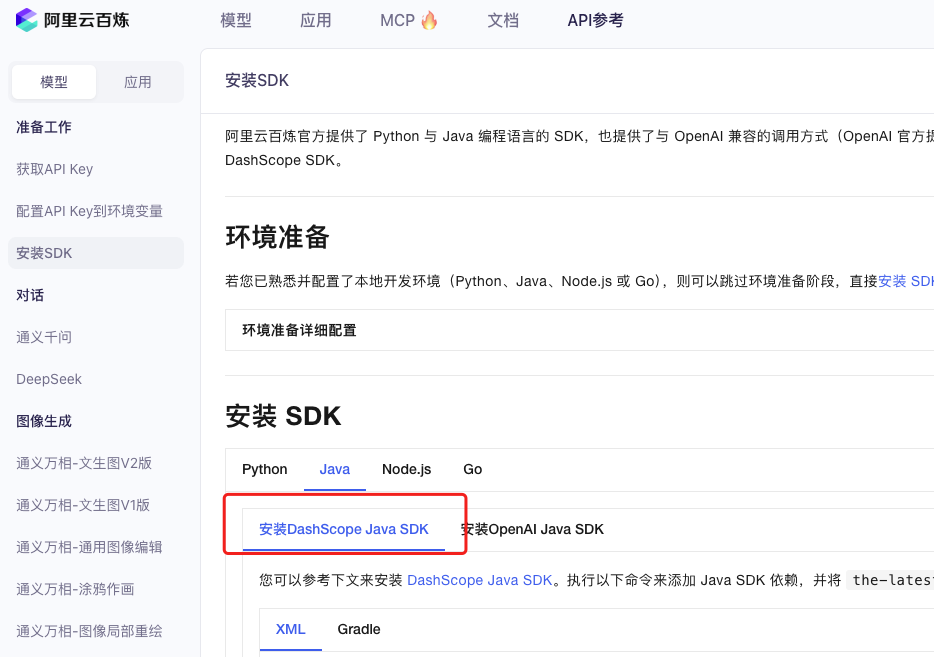
业务系统对接大模型的基础方案:架构设计与关键步骤
业务系统对接大模型:架构设计与关键步骤 在当今数字化转型的浪潮中,大语言模型(LLM)已成为企业提升业务效率和创新能力的关键技术之一。将大模型集成到业务系统中,不仅可以优化用户体验,还能为业务决策提供…...
: K8s 核心概念白话解读(上):Pod 和 Deployment 究竟是什么?)
云原生核心技术 (7/12): K8s 核心概念白话解读(上):Pod 和 Deployment 究竟是什么?
大家好,欢迎来到《云原生核心技术》系列的第七篇! 在上一篇,我们成功地使用 Minikube 或 kind 在自己的电脑上搭建起了一个迷你但功能完备的 Kubernetes 集群。现在,我们就像一个拥有了一块崭新数字土地的农场主,是时…...

MySQL 隔离级别:脏读、幻读及不可重复读的原理与示例
一、MySQL 隔离级别 MySQL 提供了四种隔离级别,用于控制事务之间的并发访问以及数据的可见性,不同隔离级别对脏读、幻读、不可重复读这几种并发数据问题有着不同的处理方式,具体如下: 隔离级别脏读不可重复读幻读性能特点及锁机制读未提交(READ UNCOMMITTED)允许出现允许…...
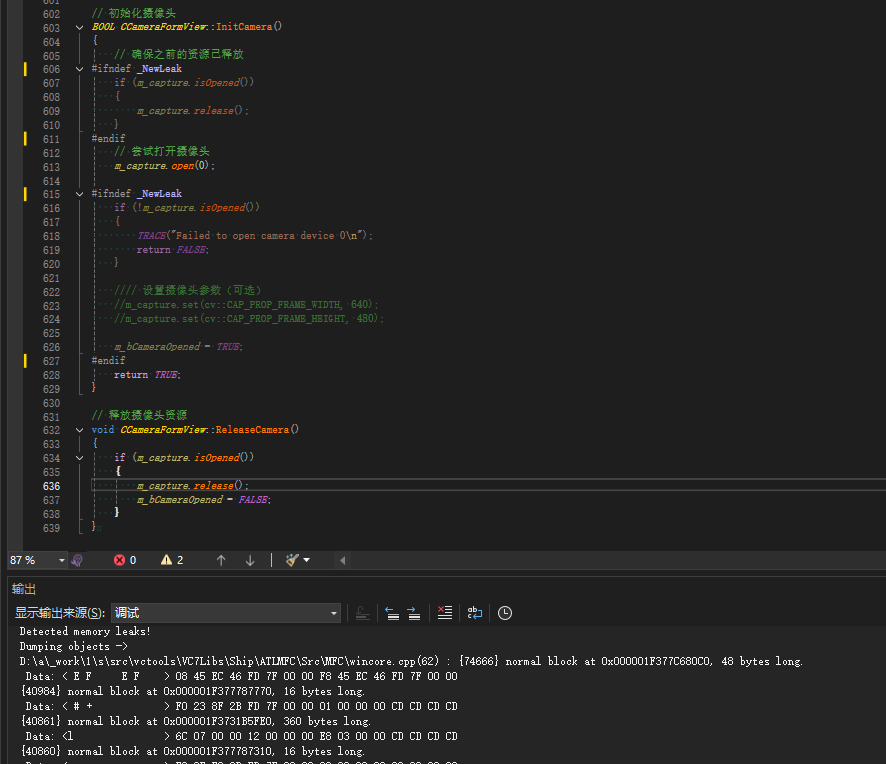
MFC内存泄露
1、泄露代码示例 void X::SetApplicationBtn() {CMFCRibbonApplicationButton* pBtn GetApplicationButton();// 获取 Ribbon Bar 指针// 创建自定义按钮CCustomRibbonAppButton* pCustomButton new CCustomRibbonAppButton();pCustomButton->SetImage(IDB_BITMAP_Jdp26)…...
中的KV缓存压缩与动态稀疏注意力机制设计)
大语言模型(LLM)中的KV缓存压缩与动态稀疏注意力机制设计
随着大语言模型(LLM)参数规模的增长,推理阶段的内存占用和计算复杂度成为核心挑战。传统注意力机制的计算复杂度随序列长度呈二次方增长,而KV缓存的内存消耗可能高达数十GB(例如Llama2-7B处理100K token时需50GB内存&a…...
)
Android第十三次面试总结(四大 组件基础)
Activity生命周期和四大启动模式详解 一、Activity 生命周期 Activity 的生命周期由一系列回调方法组成,用于管理其创建、可见性、焦点和销毁过程。以下是核心方法及其调用时机: onCreate() 调用时机:Activity 首次创建时调用。…...

PAN/FPN
import torch import torch.nn as nn import torch.nn.functional as F import mathclass LowResQueryHighResKVAttention(nn.Module):"""方案 1: 低分辨率特征 (Query) 查询高分辨率特征 (Key, Value).输出分辨率与低分辨率输入相同。"""def __…...
)
GitHub 趋势日报 (2025年06月06日)
📊 由 TrendForge 系统生成 | 🌐 https://trendforge.devlive.org/ 🌐 本日报中的项目描述已自动翻译为中文 📈 今日获星趋势图 今日获星趋势图 590 cognee 551 onlook 399 project-based-learning 348 build-your-own-x 320 ne…...
: 一刀斩断视频片头广告)
快刀集(1): 一刀斩断视频片头广告
一刀流:用一个简单脚本,秒杀视频片头广告,还你清爽观影体验。 1. 引子 作为一个爱生活、爱学习、爱收藏高清资源的老码农,平时写代码之余看看电影、补补片,是再正常不过的事。 电影嘛,要沉浸,…...
详细解析)
Caliper 负载(Workload)详细解析
Caliper 负载(Workload)详细解析 负载(Workload)是 Caliper 性能测试的核心部分,它定义了测试期间要执行的具体合约调用行为和交易模式。下面我将全面深入地讲解负载的各个方面。 一、负载模块基本结构 一个典型的负载模块(如 workload.js)包含以下基本结构: use strict;/…...
